How to Use the Selection Tool
Free-stopping torque hinge that will stop a door (lid) at any position
Terms Used
The force acting on a door (lid) generated due to gravity.
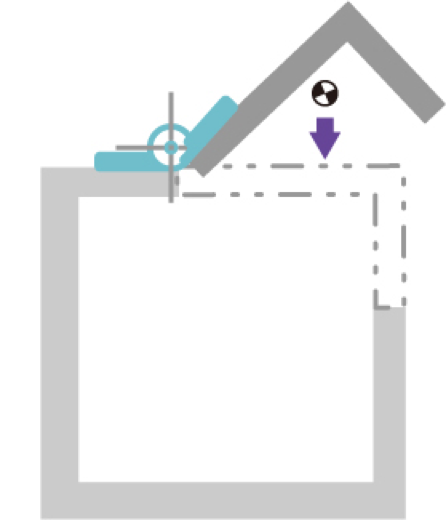
Indicates the rotational force (supporting force) generated by a hinge with regard to its axis.
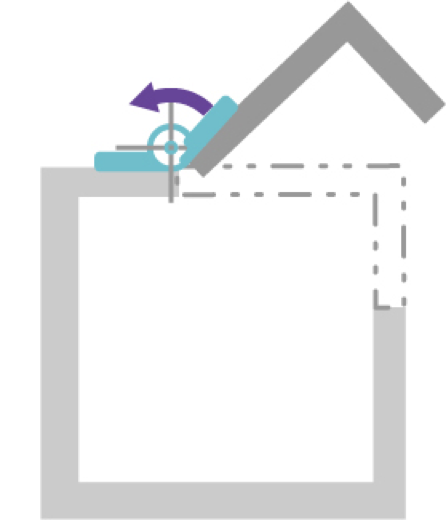
Indicates the location where a door (lid) is operated by hand when opening/closing.
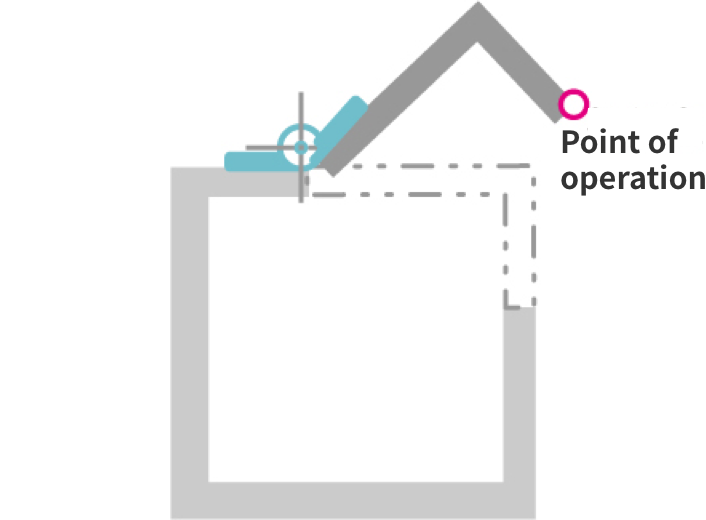
The center of gravity indicates where the weight of a door (lid) is centered. With a flat board, the center of gravity is the same as the center of the board. With a non-simple shape, it can be calculated by means such as CAD software. Be sure to check the CAD software developer’s website for details.
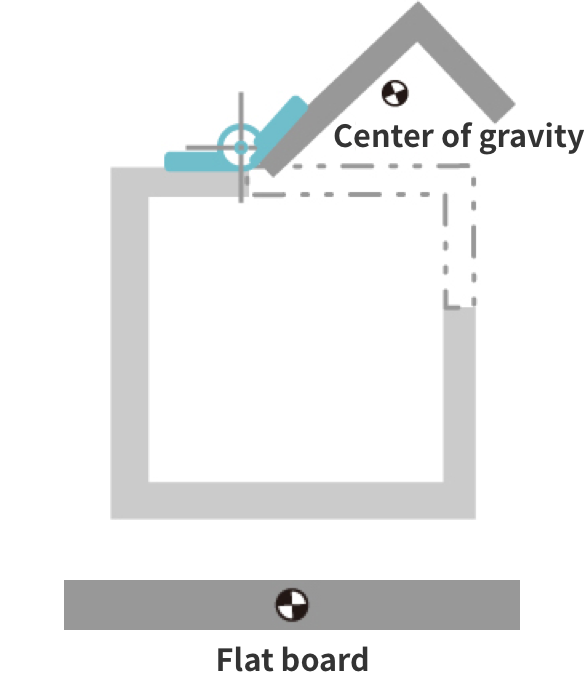
Types of Torque Hinges
Torque hinges come in adjustable and fixed types. Adjustable types can be finely adjusted after installation. If specifications are finalized, fixed-type hinges are less expensive and can be installed easily.
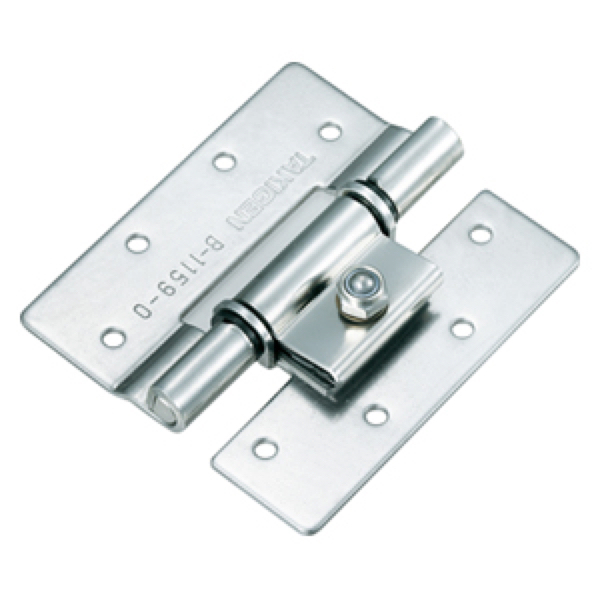
Adjustable type B-1159
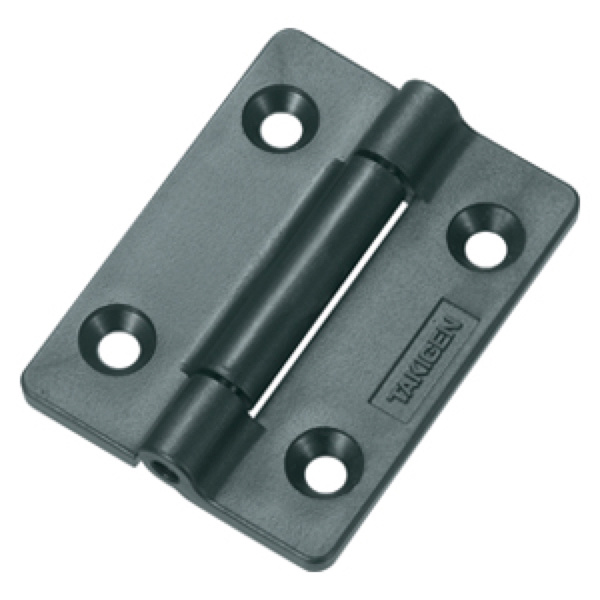
Fixed type BP-151
Reading the Graph
Door Moment and Required Torque
The door moment is at its greatest value when the center of gravity is horizontal with the axis of rotation. Use the selection tool to calculate where to allow a door to stop freely anywhere with an open/close angle between 0 and 100 degrees, based on the greatest value.

Adjustable Type
Choose an adjustable type to allow adjustment of turning tightness after installation. With adjustable types, a hinge is selected with an upper limit value for torque adjustment that is greater than the door (lid) moment.
upper limit value for torque adjustment ≧ door (lid) moment
Adjust a hinge to at least the ideal torque value before use.
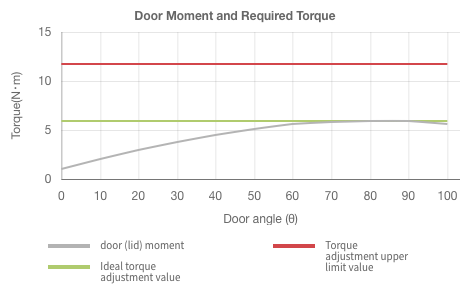
Fixed Type
With fixed types, a hinge is selected with a lower limit torque, which is based on the torque value tolerance, that is greater than the door (lid) moment.
lower limit torque total ≧ door (lid) moment
Since the torque cannot be adjusted, be sure to check with the operating force graph when selecting.
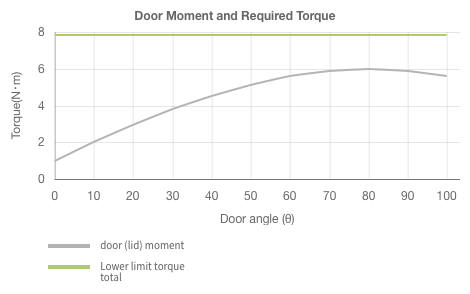
door operating force
Indicates the force required to lift at the point of operation (upward operating force) and the force required to push down at the point of operation (downward operating force).
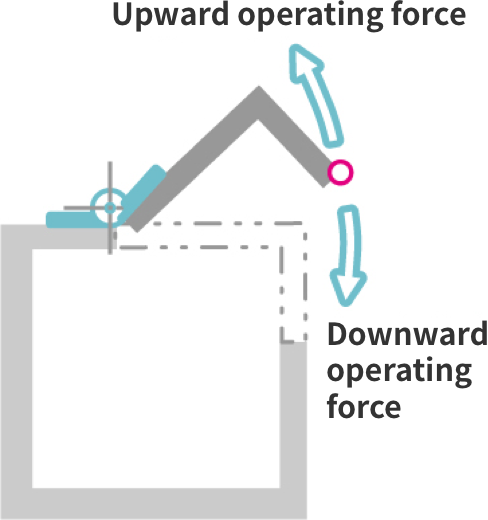
Adjustable Type
deal values represent calculated values when under certain conditions. Greatest values represent tolerances.
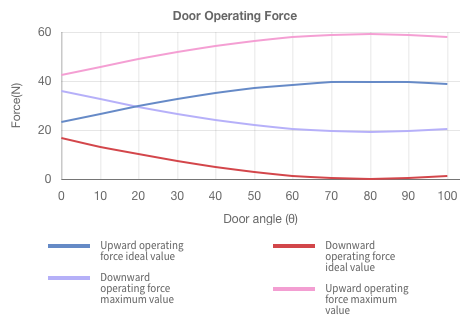
Fixed Type
Greatest values and least values are given to represent tolerances. Use them as a guide.
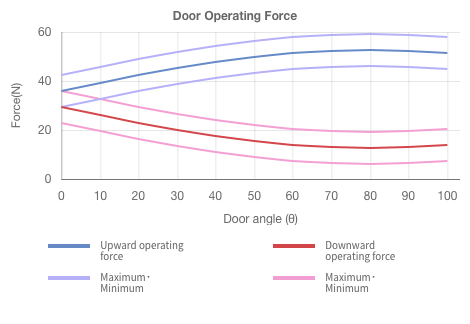
As the operating force becomes larger the greater the difference is between the door moment and the hinge torque value, movement feels heavier and tighter. Adjust a hinge so it is tighter to take into account safety when installing in a location with strong wind, on vibrating equipment, etc.
Displayed results are calculated values. Always test with actual equipment, since values may differ also depending on the construction environment.